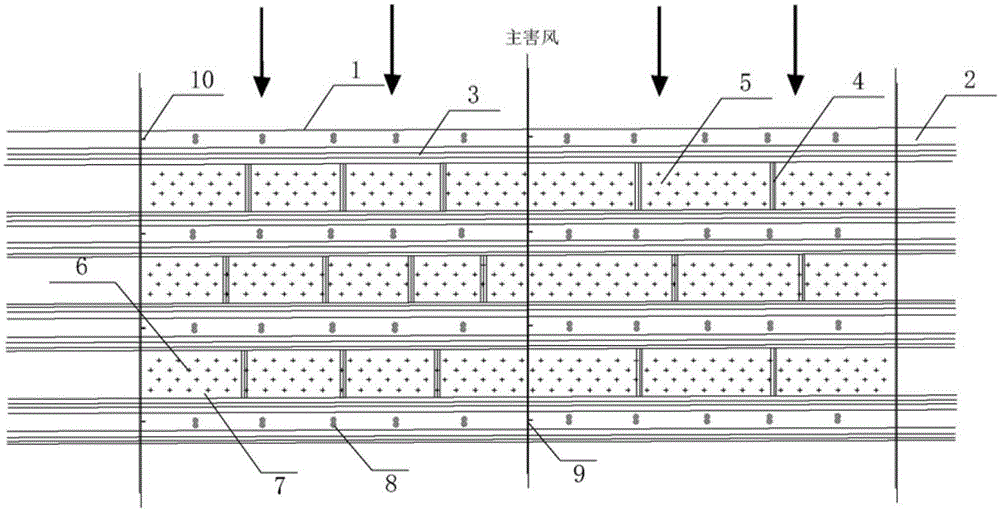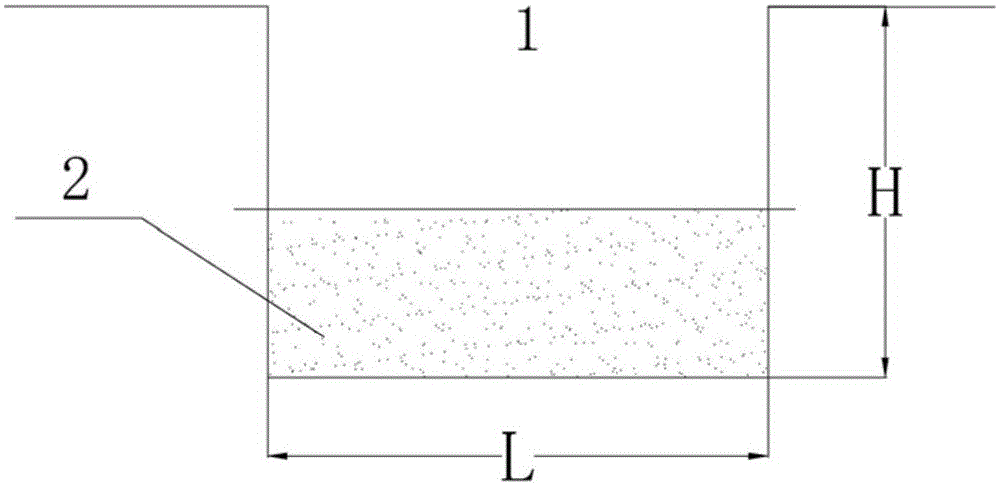Method for desertification control through salix bangongensis cuttage in high-altitude gobi wind-blown sand region
A high-altitude, Gobi technology, applied in the field of Bangong willow cuttings and sand control in the high-altitude Gobi wind beach area, can solve the problems of difficult ecological restoration, difficulty in success, high cost, etc., and achieve fewer natural constraints, convenient construction, and short cycle time. short effect
- Summary
- Abstract
- Description
- Claims
- Application Information
AI Technical Summary
Problems solved by technology
Method used
Image
Examples
Embodiment Construction
[0031] Embodiments of the present invention are described in further detail below in conjunction with the accompanying drawings:
[0032] see Figure 1 to Figure 7 , a method for controlling sand by Pangong willow cuttings in the windy beach area of the Gobi Gobi, comprising the following steps:
[0033] Step 1: In the high-altitude Gobi wind beach area, through site preparation, strip-shaped trenches 1 are evenly opened along the direction perpendicular to the main wind, and the topsoil is backfilled and leveled to form a trench cutting bed surface 2.
[0034] Step 2: Utilize the sand and gravel dug out of the trench to cultivate an isosceles trapezoidal ridge 3 on both sides of the trench 1, and set an isosceles triangular sand ridge perpendicular to the isosceles trapezoidal ridge 3 in the middle of two adjacent trenches 1. Ridge 4, forming gravel high ridge sand barrier 5;
[0035] Step 3: Flatten the windy sandy beach with high gravel ridges and sand barriers 5, open ...
PUM
| Property | Measurement | Unit |
|---|---|---|
| Width | aaaaa | aaaaa |
| Top width | aaaaa | aaaaa |
| Bottom width | aaaaa | aaaaa |
Abstract
Description
Claims
Application Information
 Login to View More
Login to View More - R&D
- Intellectual Property
- Life Sciences
- Materials
- Tech Scout
- Unparalleled Data Quality
- Higher Quality Content
- 60% Fewer Hallucinations
Browse by: Latest US Patents, China's latest patents, Technical Efficacy Thesaurus, Application Domain, Technology Topic, Popular Technical Reports.
© 2025 PatSnap. All rights reserved.Legal|Privacy policy|Modern Slavery Act Transparency Statement|Sitemap|About US| Contact US: help@patsnap.com



